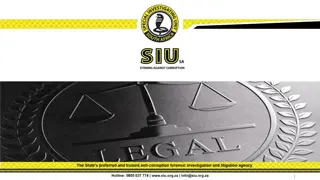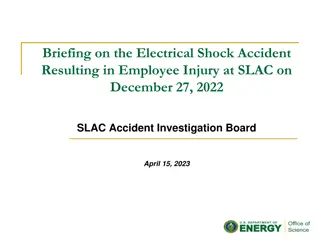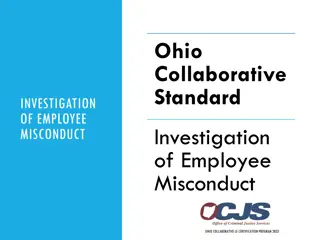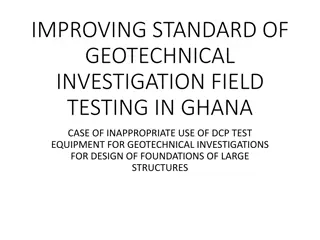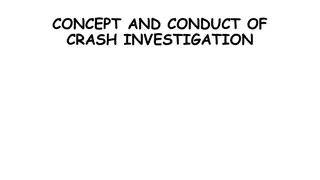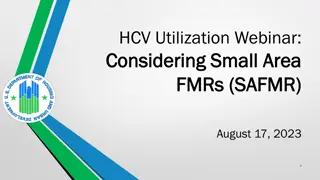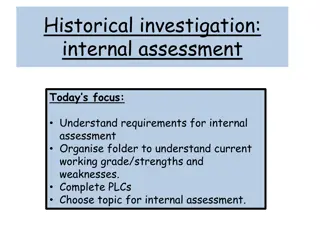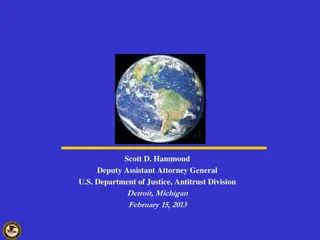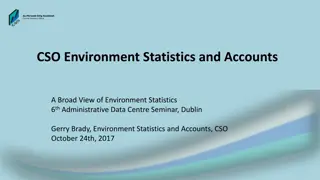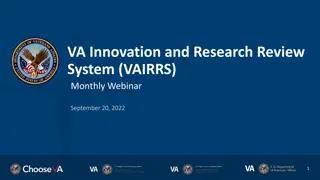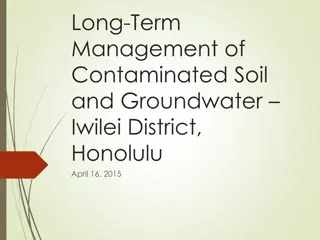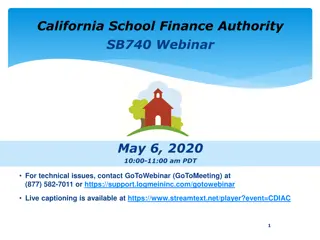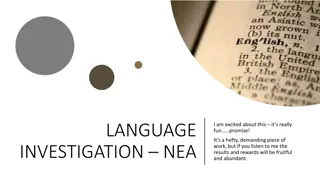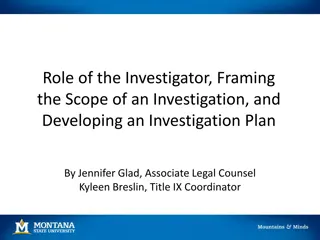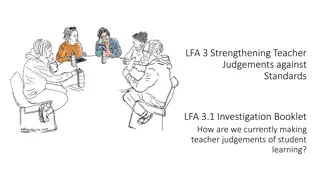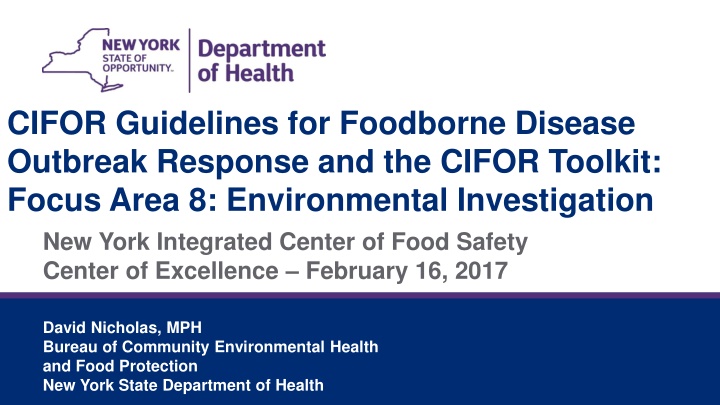
Environmental Investigation in Foodborne Disease Outbreak Response
This content discusses the CIFOR Guidelines and Toolkit focusing on Environmental Investigation in Foodborne Disease Outbreak Response. It covers the goals of environmental investigation, key areas of focus, and how agencies/jurisdictions can enhance their response to outbreaks. The webinar series aims to provide valuable insights and tools for handling food safety issues effectively.
Download Presentation

Please find below an Image/Link to download the presentation.
The content on the website is provided AS IS for your information and personal use only. It may not be sold, licensed, or shared on other websites without obtaining consent from the author. If you encounter any issues during the download, it is possible that the publisher has removed the file from their server.
You are allowed to download the files provided on this website for personal or commercial use, subject to the condition that they are used lawfully. All files are the property of their respective owners.
The content on the website is provided AS IS for your information and personal use only. It may not be sold, licensed, or shared on other websites without obtaining consent from the author.
E N D
Presentation Transcript
CIFOR Guidelines for Foodborne Disease Outbreak Response and the CIFOR Toolkit: Focus Area 8: Environmental Investigation New York Integrated Center of Food Safety Center of Excellence February 16, 2017 David Nicholas, MPH Bureau of Community Environmental Health and Food Protection New York State Department of Health
2 Background This is the ninth webinar in a series of monthly webinars from the New York Integrated Food Safety Center of Excellence (CoE) Session covers CIFOR Toolkit Focus Area 8: Environmental Investigation Supplementary sessions will be devoted to assist states that wish to complete internal evaluations using the metrics and target ranges developed for the 16 CIFOR performance measures. Additional topics will focus on emerging issues in food safety including culture independent diagnostic testing, antimicrobial resistance, and advanced molecular detection/whole genome sequencing. All webinars will be recorded and available through the CoE website at http://nyfoodsafety.cals.cornell.edu/
3 How to Use the CIFOR Toolkit For each Focus area, consider the Keys to Success listed Describe your agency s/jurisdiction s current activities and procedures in relation to the Focus Area Work as as a team: epidemiology, laboratory and environmental health Refer to written protocols/procedures and other performance measures (e.g., CIFOR target ranges for selected performance measures)
5 How to Use the CIFOR Toolkit Indicate those activities or procedures which could be changed to improve your agency s/jurisdiction s response to foodborne disease outbreaks Review the CIFOR recommendations related to the Focus Area of interest Rate the priority for implementing each CIFOR recommendation based on its likely impact on outbreak response at your agency/jurisdiction and available resources
6 What is Focus Area 8? Title: Environmental Investigation Goals for the Environmental Investigation: During an Investigation, the agency/jurisdiction staff collect, analyze, and interpret information from the implicated facility or production site to determine the etiologic agent, mode of transmission and vehicle, source of contamination, contributing factors, environmental antecedents, and food supply chain.
7 Contributing Factors vs Environmental Antecedents Environmental Antecedents Contributing Factors Factors that caused the outbreak Factors that led to the contributing factors How the outbreak occurred Why the outbreak occurred People Equipment Process Food Economic Contamination Proliferation Survival
8 Keys to Success Activities, relationships, and resources that are critical to achieving success in a Focus Area Applying metrics and measures can help you identify the success of your program or investigation process Focus Area 8: Keys to Success Staff skills and expertise Investigation Communication Making changes
9 Keys to Success: Staff Skills and Expertise Staff have expertise in food production processes, HACCP, and environmental health assessments. Staff have expertise in traceback and traceforward investigations (or have access to staff in other agencies with this expertise). Staff have good interviewing skills to solicit information from facility managers and food workers.
10 Staff Skills and Expertise
11 Staff Skills and Expertise
12 Keys to Success: Outbreak Investigation Agency/jurisdiction has a written protocol outlining the steps in the environmental health investigation of a foodborne disease outbreak. Staff have easy access to the protocol and are trained in its implementation. Staff undertake environmental health assessments at facilities or production sites implicated during a foodborne outbreak (not routine food establishment licensing inspections) and identify appropriate contributing factors and environmental antecedents. Staff undertake traceback and traceforward investigations (or have access to staff in other agencies that undertake these investigations).
13 Outbreak Investigation
14 Outbreak Investigation
15 Outbreak Investigation
16 Outbreak Investigation
17 Outbreak Investigation
18 Outbreak Investigation
19 Outbreak Investigation
20 Outbreak Investigation
21 Outbreak Investigation
22 National Environmental Assessment Reporting System (NEARS) Standardized Environmental Assessment form to help identify the underlying environmental causes of foodborne illness outbreaks Allows you to: Analyze standardized data to understand how and why outbreaks occur. Share findings or recommend actions to better respond to outbreaks and prevent future ones.
23 National Environmental Assessment Reporting System (NEARS) Information Can be Found at: https://www.cdc.gov/nceh/ehs/nears/ Free e-Learning on Environmental Assessment of Foodborne Illness Outbreaks can be found at: https://www.cdc.gov/nceh/ehs/elearn/ea_fio/index.htm
24 Keys to Success: Communication Staff communicate in a timely fashion and coordinate activities with epidemiology and laboratory staff
25 Communication
26 Keys to Success: Making Changes Agency/jurisdiction conducts a debriefing among investigators following each outbreak response and refines outbreak response protocols based on lessons learned. Agency/jurisdiction has performance indicators related to the environmental health investigation and routinely evaluates its performance in this Focus Area.
27 Making Changes
28 Make Plans to Implement Selected CIFOR Recommendations For selected recommendations identified in the prioritization process, identify Lead person responsible implementation of the recommendation Time from for implementation Consider necessary antecedents to implementation or other factors that might impact success or time frame
29 Helpful Tips for Using the Toolkit Don t get distracted by the volume Be clear on the process Keep moving don t get caught up in too much detail Focus on a few realistic changes End with specific action plans with time frames and responsible persons Appoint a facilitator and a recorder for each discussion
30 Where to Find the CIFOR Products Online at: www.cifor.us Paper copies are also available from CSTE Contact Thuy Kim at tkiml@cste.org Examples of CIFOR product use by other states: http://www.coefoodsafetytools.org/
31 Upcoming NYS CoE CIFOR Webinars Next webinar: Wednesday, March 22, 2017 at 2PM Focus Area 9: Laboratory Investigation Course announcement and link to register is posted on the DOH Learning Management System (LMS): www.nylearnsph.com
32 Resources Comments or questions for NY CoE can be directed to: Paula Huth or Andie Newman, NYSDOH 518-473-4439 Integrated Food Safety CoE Websites: NY CoE: http://nyfoodsafety.cals.cornell.edu/ CDC: http://www.cdc.gov/foodsafety/centers/


